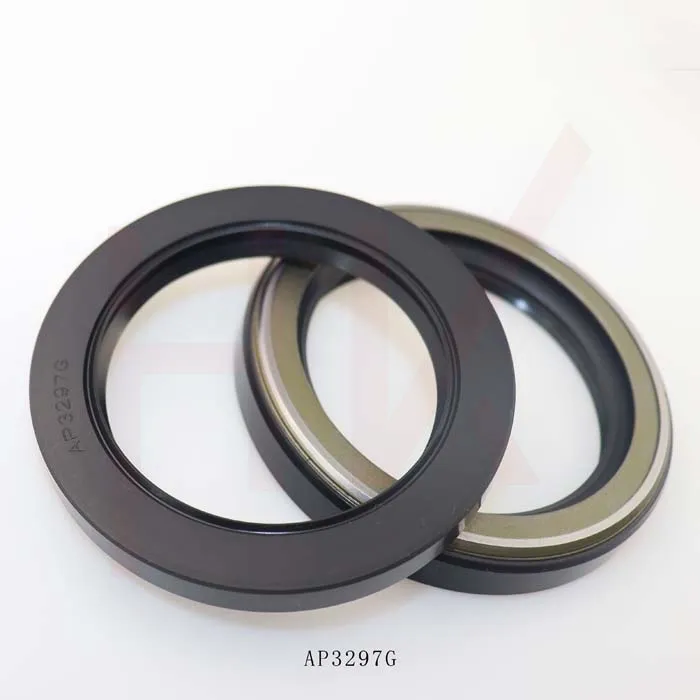Dec . 10, 2024 00:19 Back to list
Understanding Hydraulic Lip Seals for Enhanced Performance and Longevity in Machinery
Understanding Hydraulic Lip Seals A Comprehensive Overview
Hydraulic lip seals are crucial components in various engineering applications, particularly in hydraulic systems, where they are primarily utilized to prevent fluid leakage, maintain pressure, and ensure efficiency. These seals are designed to accommodate dynamic and static sealing needs, making them versatile for use in cylinders, pumps, and motors. In this article, we will delve into the structure, function, advantages, and applications of hydraulic lip seals.
Structure of Hydraulic Lip Seals
Hydraulic lip seals typically consist of a flexible sealing element made from elastomers, which may include materials like nitrile rubber, fluoroelastomers, or polyurethane. The basic design of a hydraulic lip seal features a lip that creates a hydrodynamic seal against the moving rod or piston. The geometry of the lip plays a vital role in its sealing performance; it is precisely engineered to enable effective sealing under varying pressure conditions.
The seal body usually has a rigid outer casing designed to securely fit into the housing while ensuring proper alignment. Some hydraulic lip seals also include additional features like metal springs or pressure-activated lips, which can enhance sealing performance by adjusting the lip's contact force against the sealed surfaces based on the operating pressure.
Function of Hydraulic Lip Seals
The primary function of hydraulic lip seals is to prevent the escape of hydraulic fluids from the system while simultaneously prohibiting contaminants from entering. This is essential for maintaining system performance and longevity. As hydraulic systems operate under high pressure, any leakage can lead to significant loss of efficiency and potential system failure.
Additionally, hydraulic lip seals help maintain the integrity of the hydraulic system by providing a barrier against dirt, dust, and moisture, which can compromise the fluid and lead to corrosion or wear. The design of the lip allows it to adapt to changes in pressure and temperature, ensuring reliable performance under various operating conditions.
Advantages of Hydraulic Lip Seals
1. Effective Sealing Hydraulic lip seals provide superior sealing capabilities compared to traditional packing or O-rings. Their design allows for minimal leakage, which is crucial in hydraulic applications where pressure is vital.
hydraulic lip seal

3. Versatility Hydraulic lip seals can be customized to fit various applications, accommodating different speeds, pressures, and environmental conditions. This adaptability makes them suitable for numerous industrial sectors.
4. Cost-Effective By preventing leakage and reducing wear on components, hydraulic lip seals can help lower overall operational costs. The longevity of these seals reduces the frequency of maintenance and replacements.
5. Ease of Installation Hydraulic lip seals are generally easy to install, allowing for quick replacements when necessary, resulting in minimized downtime for machinery and equipment.
Applications of Hydraulic Lip Seals
Hydraulic lip seals are widely used across various applications, including
- Automotive Industry These seals are essential in hydraulic brakes, power steering systems, and transmission components, where they help maintain fluid integrity and ensure safety.
- Industrial Machinery In hydraulic presses, forklifts, and construction equipment, hydraulic lip seals play a critical role in sealing hydraulic cylinders and pumps.
- Aerospace Hydraulic systems in aircraft rely on lip seals for reliable operation under extreme conditions, emphasizing the need for high-performance sealing solutions.
- Oil and Gas In drilling and extraction applications, hydraulic lip seals are vital in pumps and valves, where they prevent leaks and protect equipment from corrosive substances.
Conclusion
Hydraulic lip seals are an integral part of efficient hydraulic systems, offering durable and effective sealing solutions across various industries. By understanding their structure, function, and applications, engineers and technicians can better appreciate the importance of these components in maintaining optimal hydraulic performance and system integrity. As technology advances, the design and materials used for hydraulic lip seals will likely evolve, ensuring continued improvements in efficiency and reliability in hydraulic applications.
-
TCN Oil Seal Metal Ring Reinforcement for Heavy Machinery
NewsJul.25,2025
-
Rotary Lip Seal Spring-Loaded Design for High-Speed Applications
NewsJul.25,2025
-
Hydraulic Cylinder Seals Polyurethane Material for High-Impact Jobs
NewsJul.25,2025
-
High Pressure Oil Seal Polyurethane Coating Wear Resistance
NewsJul.25,2025
-
Dust Proof Seal Double Lip Design for Construction Equipment
NewsJul.25,2025
-
Hub Seal Polyurethane Wear Resistance in Agricultural Vehicles
NewsJul.25,2025
-
The Trans-formative Journey of Wheel Hub Oil Seals
NewsJun.06,2025
Products categories
















